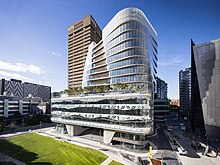UTS: New drug target identified for chronic lung disease
In their new study, the researchers discovered elevated CMA1 levels in the lung tissues of patients with severe COPD – the CMA1 levels were approximately double that found in the lung tissue of mild-COPD patients and healthy individuals.
“CMA1 induces macrophages (a type of white blood cell) to release pro-inflammatory cytokines in the lung. It’s this increased inflammation that can drive the development of COPD and poor outcomes for patients,” said Dr Liu.
Subsequent investigation of the equivalent CMA1 enzyme found in mice – an enzyme known as mMCP5 – confirmed the enzyme’s pivotal role in COPD.
It’s this increased inflammation that can drive the development of COPD and poor outcomes for patients.
Dr Gang Liu
“We were able to show in experimental COPD, that inhibiting mMCP5 provided protection against inflammation and macrophage accumulation, harmful structural changes of the lung, emphysema and impaired lung function,” Dr Liu said.
Professor Phil Hansbro, the study’s senior author and Director of the Centenary UTS Centre for Inflammation, said the team’s research offered up a new therapeutic target to help combat COPD.
“There is currently no cure for COPD and effective therapies to treat and manage the disease are urgently needed. Our study suggests that developing new drugs to inhibit CMA1 and reduce cytokine inflammation may be a novel treatment for this devastating disease that affects so many lives,” Professor Hansbro said.

